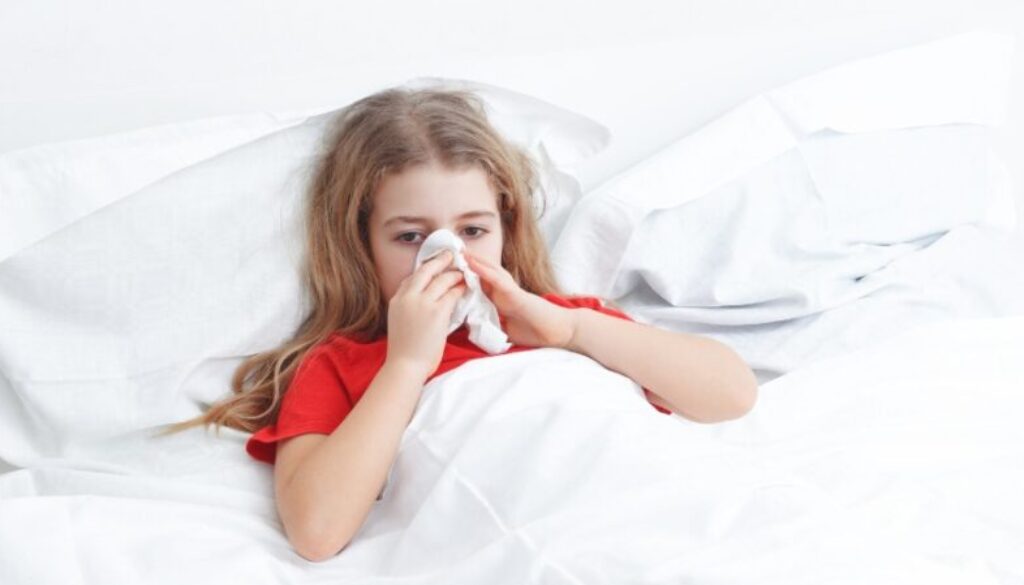Common Childhood Illnesses: Symptoms, Treatment, and Prevention
Childhood is a time of exploration, growth, and development. However, it is also a period when children are particularly susceptible to various illnesses as their immune systems are still maturing. Understanding the symptoms, treatment, and prevention of common childhood ailments can help parents and caregivers keep their little ones healthy and happy.
Below, we discuss some of the most common childhood illnesses, along with essential tips for managing and preventing them.
- Common Cold
- Symptoms: The common cold is a viral infection that affects the upper respiratory tract, particularly the nose and throat. Symptoms typically include a runny or stuffy nose, sneezing, coughing, sore throat, and mild fever. Children may also experience fatigue and a general sense of discomfort.
- Treatment: There is no cure for the common cold, but symptoms can be managed with plenty of rest, fluids, and over-the-counter medications like acetaminophen or ibuprofen to reduce fever and relieve pain. It’s important to avoid giving aspirin to children, as it can lead to a rare but serious condition called Reye’s syndrome.
- Prevention: The best way to prevent the common cold is by practicing good hygiene. Encourage frequent handwashing with soap and water, especially after sneezing, coughing, or blowing the nose. Teaching children to cover their mouths with a tissue or elbow when coughing or sneezing can also help prevent the spread of the virus.
- Ear Infections
- Symptoms: Ear infections, or otitis media, are common in children and often occur following a cold or respiratory infection. Symptoms include ear pain, difficulty hearing, irritability, trouble sleeping, and sometimes a fever. Younger children may pull at their ears or cry more than usual.
- Treatment: Many ear infections resolve on their own, but some may require antibiotics, especially if the infection is bacterial. Over-the-counter pain relievers can help alleviate discomfort. In some cases, a warm compress applied to the ear may provide additional relief.
- Prevention: To reduce the risk of ear infections, ensure your child stays up-to-date on vaccinations, including the flu vaccine. Breastfeeding for at least the first six months can also provide added protection against ear infections. Additionally, avoid exposing your child to secondhand smoke, which can increase the likelihood of ear infections.
- Hand, Foot, and Mouth Disease (HFMD)
- Symptoms: HFMD is a viral illness that commonly affects children under the age of five. Symptoms include fever, sore throat, and painful sores in the mouth, as well as a rash on the hands, feet, and sometimes the buttocks. The rash may be accompanied by blisters.
- Treatment: There is no specific treatment for HFMD, and it usually resolves on its own within 7 to 10 days. To manage symptoms, offer your child plenty of fluids and soft foods that are easy to swallow. Over-the-counter pain relievers can help reduce fever and discomfort.
- Prevention: Good hygiene practices are crucial in preventing the spread of HFMD. Encourage frequent handwashing, especially after using the restroom or changing diapers. Disinfect common surfaces and toys regularly, and avoid close contact with individuals who are infected.
- Strep Throat
- Symptoms: Strep throat is a bacterial infection caused by group A Streptococcus. It is characterized by a sudden, severe sore throat, difficulty swallowing, fever, and swollen lymph nodes. Children may also experience headaches, stomach pain, and a red rash known as scarlet fever.
- Treatment: Strep throat requires treatment with antibiotics to prevent complications and reduce the spread of the infection. It’s important to complete the entire course of antibiotics as prescribed, even if symptoms improve. Pain relievers and throat lozenges can help alleviate discomfort.
- Prevention: Preventing strep throat involves good hygiene practices, such as regular handwashing and avoiding close contact with infected individuals. Teach your child not to share eating utensils, cups, or personal items with others to minimize the risk of transmission.
- Chickenpox
- Symptoms: Chickenpox is a highly contagious viral infection that causes an itchy rash with red spots and blisters. Other symptoms include fever, fatigue, and loss of appetite. The rash typically starts on the face, chest, and back before spreading to other parts of the body.
- Treatment: Treatment for chickenpox focuses on relieving symptoms. Over-the-counter antihistamines can help reduce itching, and acetaminophen can be used to manage fever. Avoid giving aspirin to children with chickenpox, as it can lead to Reye’s syndrome. Keeping your child’s nails trimmed short can prevent scratching and reduce the risk of infection.
- Prevention: The chickenpox vaccine is the most effective way to prevent the illness. The vaccine is usually given in two doses, one at 12-15 months and the second at 4-6 years of age. Vaccination not only protects the child but also helps prevent outbreaks in the community.
Keeping Your Child Healthy
While childhood illnesses are often unavoidable, knowing how to recognize symptoms and provide appropriate care can make a significant difference in your child’s recovery. At Victoria ER, we are committed to providing expert care for all of your child’s healthcare needs, from diagnosing common illnesses to offering treatment and advice.
If your child is experiencing symptoms of a common childhood illness, don’t hesitate to seek medical attention. Our experienced team at Victoria ER is available 24/7, 365 days a year, to provide comprehensive care for your little ones. Whether it’s a fever that won’t go down, a persistent sore throat, or any other concern, we’re here to help.





